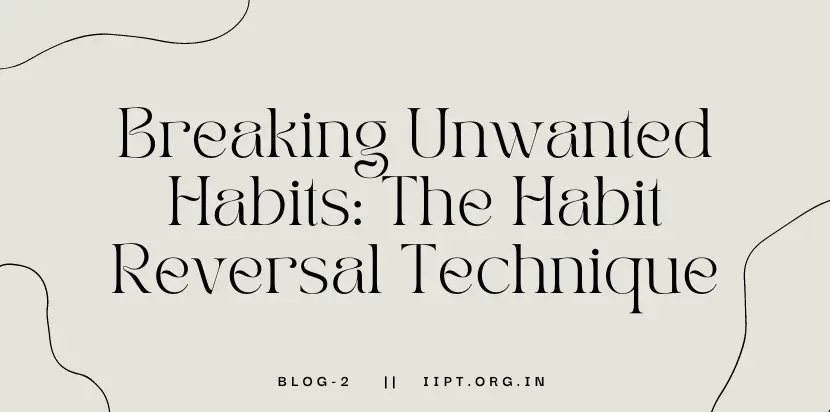Many of us struggle with unwanted habits, from nail-biting to procrastination. These ingrained behaviors can be tough to break, but there’s hope!
The habit reversal technique (HRT) is a powerful evidence-based approach that can help you overcome these challenges. This technique operates on the principle of replacing unwanted habits with healthier alternatives through awareness, competing responses, and social support. Initially developed by Azrin and Nunn in the 1970s, HRT has since been refined and adapted across different populations and habits to manage a variety of repetitive behaviors, including tics associated with Tourette’s syndrome and obsessive-compulsive disorder (OCD).
The core components of HRT involve identifying the triggers and sensations preceding the unwanted habit, increasing awareness of these cues, and implementing a competing response. Competing responses are deliberate actions or behaviors that are incompatible with the habit being targeted. For example, someone struggling with nail-biting might clench their fists or tap their fingers instead. Over time, practicing these competing responses weakens the association with the habit, leading to its reduction or elimination.
HRT works by interrupting the cycle of a habit before it’s completed. It focuses on three key components: awareness, competing response, and motivation.
* Awareness: The first step is becoming aware of the triggers that lead to the unwanted behavior. This might involve identifying the situations, emotions, or thoughts that precede the habit. For example, someone who bites their nails when feeling stressed might become more aware of their stress levels and the physical cues associated with anxiety.
* Competing Response: Once you recognize the urge, you need to have a replacement behavior ready. This competing response should be something incompatible with the unwanted habit and something you can perform easily. Continuing with the nail-biting example, a competing response might be clenching your fists or fidgeting with a stress ball when feeling stressed.
* Motivation: Maintaining motivation is crucial for successful habit reversal. Keeping a record of your progress and rewarding yourself for milestones can help you stay on track. Additionally, seeking support from a therapist or joining a support group can provide valuable guidance and accountability.
Research indicates the effectiveness of HRT across various habit-related disorders. A study published in the Journal of the American Academy of Child & Adolescent Psychiatry found that HRT was significantly more effective than supportive therapy in treating trichotillomania in children and adolescents. Furthermore, HRT has been adapted for use in combination with other therapeutic approaches, such as cognitive-behavioral therapy (CBT), enhancing its efficacy in addressing complex habits and comorbid conditions.
Moreover, the versatility of HRT allows for its application in diverse settings, including clinical practice, school settings, and self-help interventions. With proper guidance from trained therapists or through structured self-help materials, individuals can learn and implement HRT strategies to gain control over their habits. Additionally, ongoing support from peers, family, or support groups can reinforce the practice of HRT and contribute to long-term habit management and well-being.
HRT is a powerful tool for taking control of your habits. By understanding the triggers, replacing unwanted behaviors with more positive ones, and staying motivated, you can break free from the cycle and build new, healthier habits.
